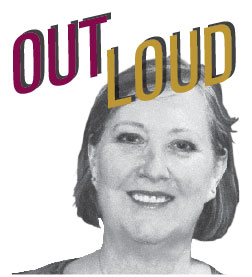Nothing in this article is meant to be medical advice. Please consult your healthcare provider.
“Once you label me, you negate me,” Soren Kierkegaard
Got your attention?
This month we focus on effects of our unhealthy penchant for either/or thinking.
Either/or thinking can be defined as “… the tendency to think in terms of polar opposites — that is, in terms of the best and worst — without accepting the possibilities that lie between these two extremes”.
However, everyday reality exists in infinite gray shadings between artificial boundaries suggested by polar opposites. Most of the time, that is. Extremes do exist. Remarkable in their psychological power, nevertheless, extremes are rare.
We need to appreciate the healing and liberating qualities of the shades of gray. In other words, nothing is truly all good or all bad. These last two statements are examples of both/and thinking.
First note that either/or decision-making can be appropriate in some instances. Willy Steiner of Executive Coaching Concepts (see link) points to these conditions in organizations:
“Such an Either/Or choice is frequently appropriate when:
• “The choice really is strictly binary.
• “Time pressures influence the choice because:
• “They limit the perceived options and favor sticking with the status quo;
• “No viable options seem readily available or obvious;
• “Schedule constraints limit the time available for meeting preparation and adequate time to analyze options in the meeting.”
However, in personal relationships, because extremes are rare, either/or polarization distorts reality and often causes harm in our relationships and on broader stages of society. “Either/or thinking separates us from our partner. And seeing ourselves as disconnected from our partner can allow for all manner of justifications and rationalizations that allow us to make decisions of self-interest rather than in the interest of the wellbeing of the relationship.” (See APA link.)
“For example, if I say, ‘I am good and you are bad’ … I create a disconnection that may lead to antagonism, conflict, and harm. If, however, I … understand that I am also bad and you are also good … in this way we are connected in spite of our opposition. And this connection heals the wound that has been created …” by either/or thinking. The same unhealthy disconnection is created if I am sure that I am wholly right and you are wholly wrong.
Because we are enculturated into either/or thinking, learning both/and thinking calls for humbly committing to practice and perseverance. We are constantly bombarded by the false reality of either/or, good or bad, right or wrong polarization. How do we get out of this trap? Our task is to “… figure out how people who have seemingly opposite facts both have valid information. By digging deeper to make sense out of what seems at odds, … do the hard work of problem solving.” (See Schwarz Associates link.) It is hard work. The work heals and forms interconnections rather than forcing us apart.
Let’s find commonality and solve problems from there.
Some information above taken from:
Callie Wight is a California state-licensed registered nurse with a Master of Arts in psychology.






